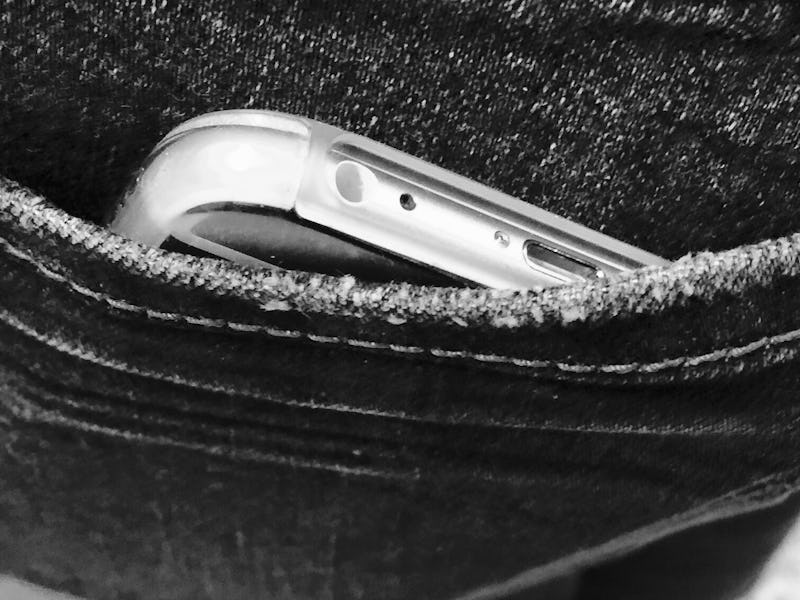We are cyborgs now, thanks to our smartphones. These machines are extensions of voices, memories, and brains, squashed between a lithium-ion battery and a fruit logo. What separates us from the Darth Vader and RoboCop breeds is simply that we’re modular, which is to say our mechanical parts are separate entities and not jammed, a la Tony Stark’s arc reactor, into our chest cavities — though who knows about the iPhone 8. This situation leaves us with a question to answer: What’s the best pocket to stick the damn thing in?
If you eschew cargo pants and phone holsters, there are, essentially, three options:
1. The Back Pocket
Back pockets are the choice of the rebellious and reckless. Apple says these pockets should be avoided lest you end up with a case of busted iPhone disease upon taking a seat. If your phone is protected or reinforced, depending on the thickness of its shell, that might save your device. But not, perhaps, your back: Physiotherapists, still reeling from that Seinfeld bit, have been warning about “hip-pocket syndrome” — pinched nerves thanks to sitting on bulky objects — for the past decade. Sure, you can take it out when you sit down, but nothing good has ever come from leaving your phone on the bar.
2. Non-Dominant Side Front Pocket
There is a roughly 70 percent chance that you hold your phone with your dominant hand to the same side of your head (e.g., to your right ear if you’re right-handed). When you are answering a text, not drawing a sword, keeping your phone in your non-dominant side is a somewhat inefficient decision. Which brings us to:
3. Dominant Side Front Pocket
This is the choice with no clear drawbacks, beyond the fact that cell phone manufacturers technically recommend you keep phones further than 15 millimeters from your skin. All pockets, therefore, aren’t exactly endorsed, and the ones most proximal to gonads likely least so. Apple is covering its butt legally — a link between disease and cell phone use is by no means clearly established. Few national organizations are willing to speak definitively about the health hazards of cell phones, but the two most common refrains are that cancer and cell phones have “failed to show an association” (as the FDA notes) and the well-worn “more research is needed.” Plus, Darth Vader never had to deal with pickpockets, but you might, and the front pocket is a good defense against the sticky-fingered arts.
